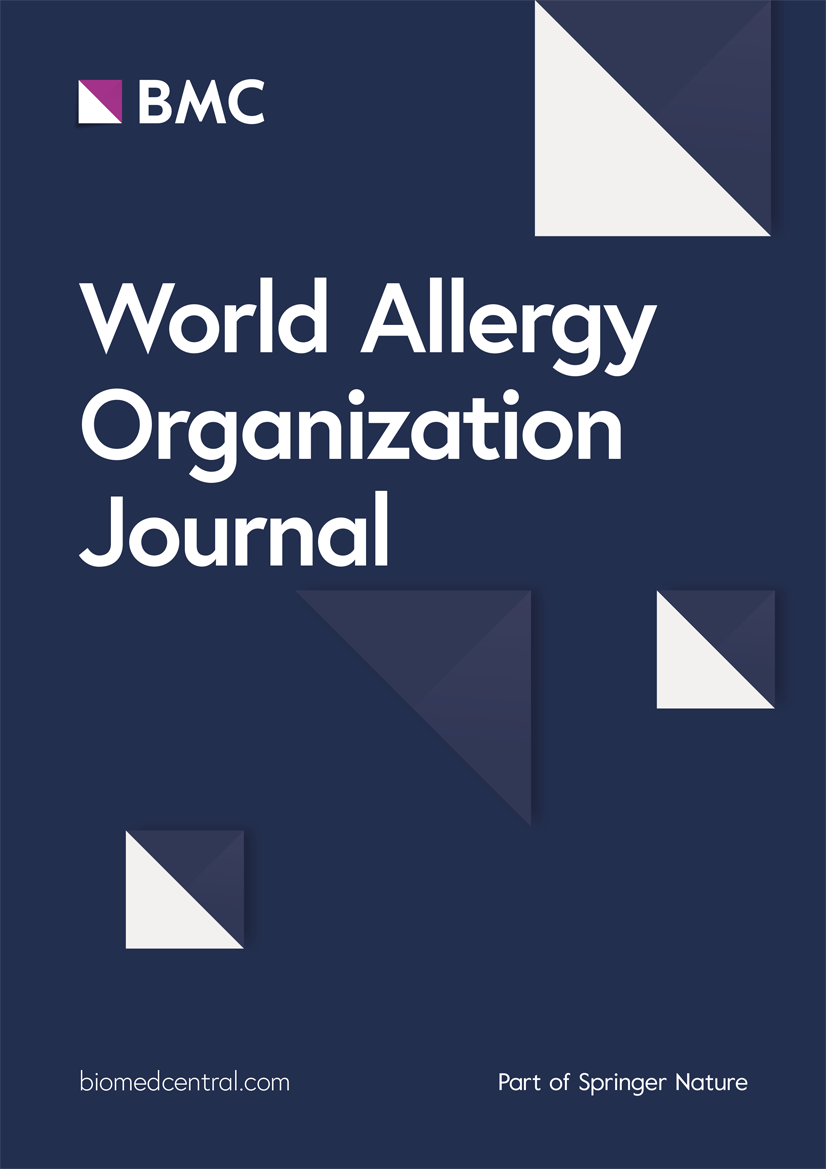Apolipoprotein A-I mediates function of follicular regulatory T cells and type 2 follicular helper T in allergic rhinitis
IF 4.3
2区 医学
Q2 ALLERGY
引用次数: 0
Abstract
Background
The follicular regulatory T cells (Tfr) and type 2 follicular helper T (Tfh2) play important roles in the pathogenesis of allergic rhinitis (AR). However, its detailed mechanism underlying the regulation of between Tfr and Tfh in AR is unclear. Apolipoprotein AI (Apo-AI), a well-established anti-inflammatory protein, exhibits anti-inflammatory effects on neutrophils, monocytes, macrophages, eosinophils, and type 2 innate lymphoid cells. We sought to investigate the interaction and mechanism between Apo-AI and Tfr/Tfh2 in AR.
Methods
The peripheral Tfh2 and Tfr cells were detected and compared by flow cytometry and their correlation with serum Apo-AI protein expression were analyzed. The effect of Apo-AI on Tfh2 and Tfr cells were determined through detection of functional cytokines and key transcription factors by enzyme-linked immunosorbent assay (ELSIA) or polymerase chain reaction (PCR). A Tfr-Tfh2-B cell coculture system was adopted to investigate the role of Apo-AI. Apo-AI knockout AR mice model was established to verify the results of in vitro studies.
Results
The serum Apo-AI concentration was positively correlated with the blood frequencies of Tfr cells and negatively correlated with the blood frequencies of Tfh2 cells in AR patients. Apo-AI inhibited IL-4 and IL-21 protein expression by Tfh2 and promoted IL-10 and TGF-beta protein expression by Tfr. In Tfr-Tfh2-B cell coculture system, Apo-AI attenuated the expression of IL-4, IL-21 and activation-induced cytidine deaminase through inducible costimulator (ICOS)/inducible costimulator ligand (ICOSL) pathways. Apo-AI partially restored the suppressive function of AR-derived Tfr cells. Apo-AI knockout AR mice presented with elevated blood Tfh2 frequencies and decreased blood Tfr frequencies, while administration of anti-ICOSL reversed the effect of Apo-AI.
Conclusion
Apo-AI alleviates AR through the regulation of the function of Tfh2 and Tfr, which may serve as a potential treatment target for AR.
载脂蛋白A-I介导过敏性鼻炎中滤泡调节性T细胞和2型滤泡辅助性T细胞的功能
滤泡调节性T细胞(Tfr)和2型滤泡辅助性T细胞(Tfh2)在变应性鼻炎(AR)的发病过程中起重要作用。然而,其在AR中调控Tfr和Tfh之间的详细机制尚不清楚。载脂蛋白AI (Apo-AI)是一种公认的抗炎蛋白,对中性粒细胞、单核细胞、巨噬细胞、嗜酸性粒细胞和2型先天淋巴样细胞具有抗炎作用。方法采用流式细胞术检测外周血Tfh2和Tfr细胞,比较其与血清Apo-AI蛋白表达的相关性。采用酶联免疫吸附法(ELSIA)或聚合酶链反应法(PCR)检测功能性细胞因子和关键转录因子,检测Apo-AI对Tfh2和Tfr细胞的影响。采用Tfr-Tfh2-B细胞共培养体系研究Apo-AI的作用。建立Apo-AI敲除AR小鼠模型,验证体外研究结果。结果AR患者血清载脂蛋白ai浓度与Tfr细胞血频率呈正相关,与Tfh2细胞血频率呈负相关。Apo-AI通过Tfh2抑制IL-4和IL-21蛋白的表达,通过Tfr促进IL-10和tgf - β蛋白的表达。在Tfr-Tfh2-B细胞共培养体系中,Apo-AI通过诱导共刺激物(ICOS)/诱导共刺激物配体(ICOSL)途径减弱IL-4、IL-21和激活诱导胞苷脱氨酶的表达。Apo-AI部分恢复ar源性Tfr细胞的抑制功能。Apo-AI敲除AR小鼠表现出血Tfh2频率升高和血Tfr频率降低,而抗icosl可逆转Apo-AI的作用。结论apo - ai通过调节Tfh2和Tfr的功能减轻AR,可能是AR的潜在治疗靶点。
本文章由计算机程序翻译,如有差异,请以英文原文为准。
求助全文
约1分钟内获得全文
求助全文
来源期刊

World Allergy Organization Journal
Immunology and Microbiology-Immunology
CiteScore
9.10
自引率
5.90%
发文量
91
审稿时长
9 weeks
期刊介绍:
The official pubication of the World Allergy Organization, the World Allergy Organization Journal (WAOjournal) publishes original mechanistic, translational, and clinical research on the topics of allergy, asthma, anaphylaxis, and clincial immunology, as well as reviews, guidelines, and position papers that contribute to the improvement of patient care. WAOjournal publishes research on the growth of allergy prevalence within the scope of single countries, country comparisons, and practical global issues and regulations, or threats to the allergy specialty. The Journal invites the submissions of all authors interested in publishing on current global problems in allergy, asthma, anaphylaxis, and immunology. Of particular interest are the immunological consequences of climate change and the subsequent systematic transformations in food habits and their consequences for the allergy/immunology discipline.
 求助内容:
求助内容: 应助结果提醒方式:
应助结果提醒方式:


